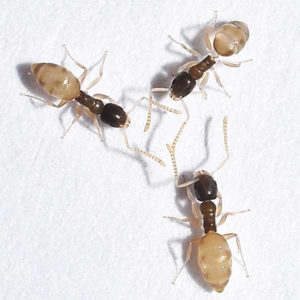Little Black Ants in Central TN
The little black ant is a common structural pest and very common in Central TN. Little black ants are highly adaptable and are not usually associated with indoor colonies. Typically nesting outdoors, little black ants access homes or structures in search of food. They are omnivores, feeding on both plant and animal foods. Little black ants feed on a variety of foods including sweets, meats, grease, insects, and even feed on bird feces. Relentless pests, little black ants can be difficult to eliminate.
Little Black Ant Habitat
The colonies of little black ants may contain several queens and be heavily populated. Generally, little black ant infestations start outside and can be traced back to mulch, stones, a stump, tree, log, fence, or pile of lumber or bricks. Indoors, little black ant colonies will nest in wall voids and cabinets, as well as, within and behind foundations and brick or stone veneer. When colony populations are at their peak, little black ants may spread throughout a structure quickly, invading every gap and crack or crevice. The sight of little black ants inside homes may signal a larger infestation outdoors or within the structure.
Little Black Ant Behaviors, Threats, or Dangers
Despite the fact that little black ants have a small stinger that doesn’t really do any damage, they can become a considerable pest when they invade a home in large numbers. These tiny invasive bullies are aggressive and have been known to wipe out entire red imported fire ant colonies. While they favor nesting outdoors, their small size allows them to gain access under window sills, beneath carpets and floorboards, and any crevice inside your home. If a little black ant infestation is suspected, it is recommended to consult a licensed ant exterminator.
Need help with Little Black Ant control?
We'll call you! Leave your information below.





